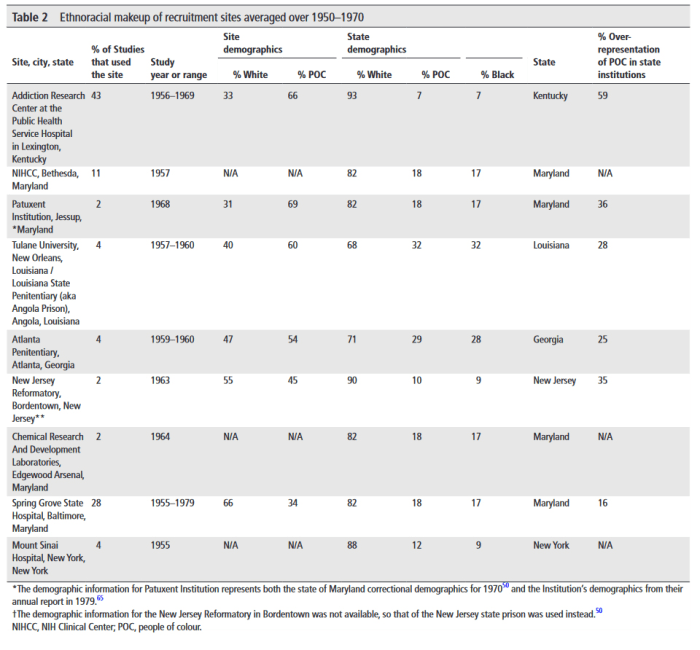New Study Reveals the CIA Used Incarcerated Black People as Guinea Pigs in MKULTRA and Brainwashing Experiment w/No Scientific Merit. Tortured and Dosed Them with Unsafe Levels of Psychoactive Drugs
/From [FTP] By now, many will be familiar with Project MKULTRA. For decades, the CIA conducted highly unethical experiments on humans in order to perfect brainwashing, mind control and torture techniques.
Perhaps the program’s most notorious aspect was the administration of high doses of psychoactive drugs to targets, particularly LSD. These substances were brought to Langley’s attention in 1948 by Richard Kuhn, one of 1,600 Nazi scientists covertly spirited to the U.S. via Operation Paperclip following World War II. When MKULTRA was formally established five years later, some individuals consulted directly on the project.
The unwitting dosing of U.S. citizens with LSD is infamous; among those spiked were CIA operatives themselves. That the Agency exploited mental patients, prisoners, and drug addicts for the purpose – “people who could not fight back,” in the words of an unnamed Agency operative – is less well-known.
A study by academics at the University of Ottawa’s Culture and Mental Health Disparities Lab sheds significant new light on this underexplored component of MKULTRA and illuminates a hitherto wholly unknown dimension of the program; people of color, overwhelmingly Black Americans, were disproportionately targeted by the CIA in its service.
SPOKEN OF AS ANIMALS AND TREATED AS SUCH
In 1973, due to fears CIA covert action might be officially audited in the wake of the Watergate scandal, then-Agency chief Richard Helms ordered all papers related to MKULTRA destroyed.
Tens of thousands of documents somehow survived the purge. Even more conveniently, a significant portion of the research yielded by the project’s experiments was published in freely-accessible, peer-reviewed scientific journals, as over 80 private and public universities, prisons, and hospitals – whether knowingly or not – conducted psychedelic drug experiments on behalf of the CIA. While LSD was the preponderant substance of interest, the effects of DMT, mescaline, psilocybin, and THC were also extensively explored.
In all, the University of Ottawa team analyzed 49 of these papers, published from the 1950s to the 1970s. Forty percent related to experiments conducted at the Addiction Research Center in Kentucky, which the CIA directly managed.
The site included a prison for individuals charged with violating narcotics laws, a “special ward” for drug research, and a prison populated by purported “addicts.” Researchers employed there avowedly preferred to perform tests on former and current drug users, as they were considered to be “experienced” in the effects of illicit substances and therefore better able to give informed consent than the abstinent. In practice, the CIA’s guinea pigs frequently had no idea what was being administered.
In analyzing available literature, the academics examined participants’ stated race and ethnicity, recruitment strategies, methodology, and potential dangers to participants. All studies used captured, incarcerated test subjects, coercive incentives for participation, unsafe dosing levels, and had questionable scientific merit.
In almost 90% of cases, at least one ethical violation was identified, over three-quarters employed a high-risk dosing schedule that would be unacceptable under modern guidelines, and 15% used participants with psychotic disorders. Roughly 30% exploited people of color.
While in many studies, the race or ethnicity of test subjects was not recorded, further investigation by the Ottawa academics revealed Black Americans were significantly overrepresented in the recruitment sites from which test subjects were drawn. It is inevitable that the actual number of MKULTRA studies that abused people of color is far larger. For example, while people of color constituted just 7% of Kentucky’s population at the time of experiments at the Addiction Research Center, Black and Mexican Americans represented 66% of the site’s inmate population.[MORE]






































































































































































































































































